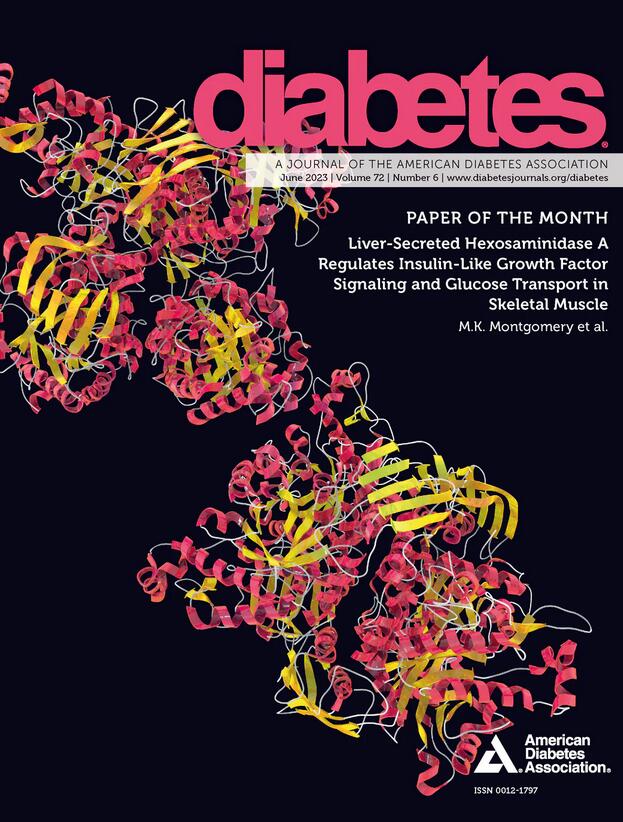High-resolution whole-genome DNA methylation revealed unique signatures of painful diabetic neuropathy
IF 6.2
1区 医学
Q1 ENDOCRINOLOGY & METABOLISM
引用次数: 0
Abstract
The aim of this work was to describe the DNA methylation signature and to identify genes associated with neuropathic pain in type 2 diabetes mellitus. We analyzed two independent diabetic neuropathy cohorts: PROPGER consisting of 72 painful and 67 painless patients recruited at the German Diabetes Center in Düsseldorf (DE), and PROPENG comprising 27 painful and 65 painless diabetic neuropathy patients recruited at the University of Manchester (UK). Genome-wide methylation data was generated using Illumina Infinium Methylation EPIC v1.0 BeadChip. We used four different selection criteria to identify promising pain-related genes. Our findings revealed significant differences in methylation patterns between painful and painless diabetic neuropathy and identified a set of individual CpG sites of unique candidate genes associated with the painful phenotype. Several of these genes, including GCH1, MYT1L and MED16, have been previously linked to pain-related phenotypes or diabetes. Through pathway enrichment analysis, we demonstrated that specific epigenetic signatures could contribute to the complex phenotype of diabetic neuropathy and cluster analyses highlighted significant epigenetic dissimilarities between painful and painless phenotypes. Our results uncovered epigenetic differences between painful and painless diabetic neuropathy patients and identified targeted genes linked to neuropathic pain through DNA methylation mechanisms. This approach holds promise for investigating other chronic pain conditions, such as secondary chronic pain from cancer treatment, thoracic surgery, and various transplant settings.高分辨率全基因组DNA甲基化揭示了疼痛性糖尿病神经病变的独特特征
这项工作的目的是描述DNA甲基化特征,并确定与2型糖尿病神经性疼痛相关的基因。我们分析了两个独立的糖尿病神经病变队列:PROPGER包括从德国塞尔多夫(DE)糖尿病中心招募的72名疼痛和67名无痛患者,PROPENG包括从曼彻斯特大学(英国)招募的27名疼痛和65名无痛糖尿病神经病变患者。使用Illumina Infinium methylation EPIC v1.0 BeadChip生成全基因组甲基化数据。我们使用了四种不同的选择标准来识别有希望的疼痛相关基因。我们的研究结果揭示了疼痛性和无痛性糖尿病神经病变之间甲基化模式的显著差异,并确定了一组与疼痛表型相关的独特候选基因的单个CpG位点。这些基因中的一些,包括GCH1, MYT1L和MED16,以前与疼痛相关的表型或糖尿病有关。通过通路富集分析,我们证明了特定的表观遗传特征可能有助于糖尿病神经病变的复杂表型,聚类分析突出了疼痛型和无痛型之间显着的表观遗传差异。我们的研究结果揭示了疼痛性和无痛性糖尿病神经病变患者之间的表观遗传差异,并通过DNA甲基化机制确定了与神经性疼痛相关的靶向基因。这种方法有望用于研究其他慢性疼痛状况,如癌症治疗、胸外科手术和各种移植设置引起的继发性慢性疼痛。
本文章由计算机程序翻译,如有差异,请以英文原文为准。
求助全文
约1分钟内获得全文
求助全文
来源期刊

Diabetes
医学-内分泌学与代谢
CiteScore
12.50
自引率
2.60%
发文量
1968
审稿时长
1 months
期刊介绍:
Diabetes is a scientific journal that publishes original research exploring the physiological and pathophysiological aspects of diabetes mellitus. We encourage submissions of manuscripts pertaining to laboratory, animal, or human research, covering a wide range of topics. Our primary focus is on investigative reports investigating various aspects such as the development and progression of diabetes, along with its associated complications. We also welcome studies delving into normal and pathological pancreatic islet function and intermediary metabolism, as well as exploring the mechanisms of drug and hormone action from a pharmacological perspective. Additionally, we encourage submissions that delve into the biochemical and molecular aspects of both normal and abnormal biological processes.
However, it is important to note that we do not publish studies relating to diabetes education or the application of accepted therapeutic and diagnostic approaches to patients with diabetes mellitus. Our aim is to provide a platform for research that contributes to advancing our understanding of the underlying mechanisms and processes of diabetes.
 求助内容:
求助内容: 应助结果提醒方式:
应助结果提醒方式:


